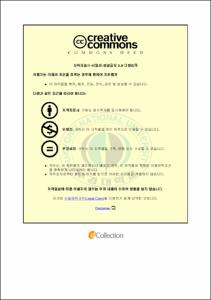초임계 이산화탄소를 이용한 미세전자소자의 제조
- Alternative Title
- Fabrication of Microelectronic Devices Using by scCO2
- Abstract
- Over the last 30 years the semiconductor industry was enabled primarily through advances in equipment design and through process changes that provided scaling (ongoing reduction of feature sizes). Recently, increased numbers of new materials, integration schemes, high aspect ratio structures, and features with tighter pitch and smaller CD?fs are pushing the limits of current processing techniques and may require new solutions to meet these challenges, not simply the next generation of equipment. Wafer processing with supercritical carbon dioxide (scCO2) is an example of a novel technology, which could solve many future roadblocks on currently on the processes. Carbon dioxide is nontoxic, nonflammable, inert, and is not surprisingly the leading candidate for a more environmentally responsible replacement for organic and aqueous solvents in many processes in semiconductor industry. Numerous proposed CO2 applications that are both process enabling and potential for chemical abatement in microelectronics engineering include stripping, drying, developing, and spinning of photoresist, chemical fluid deposition of metals, etching of sacrificial oxide, and repairing of plasma damaged low k dielectrics. In this thesis, the silylating effect of TMCS, HMDS and TMDCS in scCO2 on O2 plasma ashed SiOCH low-k dielectrics was studied for the rapid restoration of hydrophobicity as well as a high-dose ion-implanted photoresist (HDIPR) was stripped off from the surface of a semiconductor wafer by using a mixture of supercritical carbon dioxide and a co-solvent. Moreover, we studied about dry etching process using supercritical carbon dioxide (scCO2). As a result, this green solvent is being considered for use to advantage etching of sacrificial layers with high selectivity toward Poly Si structural layers. Furthermore, scCO2?]based solutions in wafer etching would eliminate the water?]based drying step and prevent structural damage to materials in microelectronic devices.
- Issued Date
- 2011
- Awarded Date
- 2011. 2
- Type
- Dissertation
- Publisher
- 부경대학교
- Alternative Author(s)
- Jae Mok Jung
- Affiliation
- 부경대학교 공과대학원
- Department
- 대학원 이미지시스템공학과
- Advisor
- 임권택
- Table Of Contents
- 1. 제 1장 서론 1
1.1초임계 이산화탄소의 특성 1
1. 2. 이론적 배경 3
1.3 요약 11
1.4. 참고문헌 13
제 2장 초임계 이산화탄소를 이용한 고농도 이온주입 포토레지스트의 제거 17
2. 1. 서론 19
2. 2. 실 험 23
2. 3. 결과 및 고찰 27
2. 3. 1. 공용매에 따른 제거 효과 27
2. 3. 2. 초음파를 이용한 HDIPR 의 제거 44
2. 4. 결 론 52
2. 5. 참고문헌 54
제 3장 초임계 이산화탄소를 이용한 플라즈마 손상된 다공성 저유전 막질의 복원 58
3. 1. 서 론 60
3. 2. 실 험 64
3. 2. 1. 시료 및 재료 64
3. 2. 2. 실험방법 65
3. 3. 결과 및 고찰 67
3. 3. 1. FT-IR 분석 69
3. 3. 2. 접촉각 및 ellipsometer 분석 78
3. 3. 3. SIMS분석 79
3. 3. 4. 저유전 막질 기공의 봉인효과 82
3. 3. 5. 시간에 따른 복원 퇴행성 분석 85
3. 4. 결 론 86
3. 5. 참고문헌 89
제 4장 고 종횡비를 가지는 MEMS 소자의 초임계 이산화탄소 와 HF를 이용한 건식식각 92
4. 1. 서 론 94
4. 2. 실 험 98
4. 2. 1. 실험 장비 및 시약 99
4. 2. 2. 폴리실리콘 캔틸레버 빔 제작 100
4. 3. 실험 방법 102
4. 3. 1. 초임계 건식에칭 -one chamber system 103
4. 3. 2. 초임계 건식에칭-Two chamber system 104
4. 4. 결과 및 토론 106
4. 4. 1. One chamber system 사용에 따른 TEOS 막질의 식각률 106
4. 4. 2. Two chamber system 사용에 따른 TEOS 막질의 식각률 114
4. 4. 3. MEMS 구조 습식 에칭 125
4. 4. 4. MEMS 구조 scCO2건식 에칭 129
4. 4. 4. 1. 에칭 잔류물 129
4. 4. 4. 2. HF/H20/scCO2를 이용한 MEMS 구조물 건식에칭 132
4. 5. 결 론 134
4. 6. 참고문헌 136
- Degree
- Doctor
- Files in This Item:
-
-
Download
 초임계 이산화탄소를 이용한 미세전자소자의 제조.pdf
기타 데이터 / 4.42 MB / Adobe PDF
초임계 이산화탄소를 이용한 미세전자소자의 제조.pdf
기타 데이터 / 4.42 MB / Adobe PDF
-
Items in Repository are protected by copyright, with all rights reserved, unless otherwise indicated.